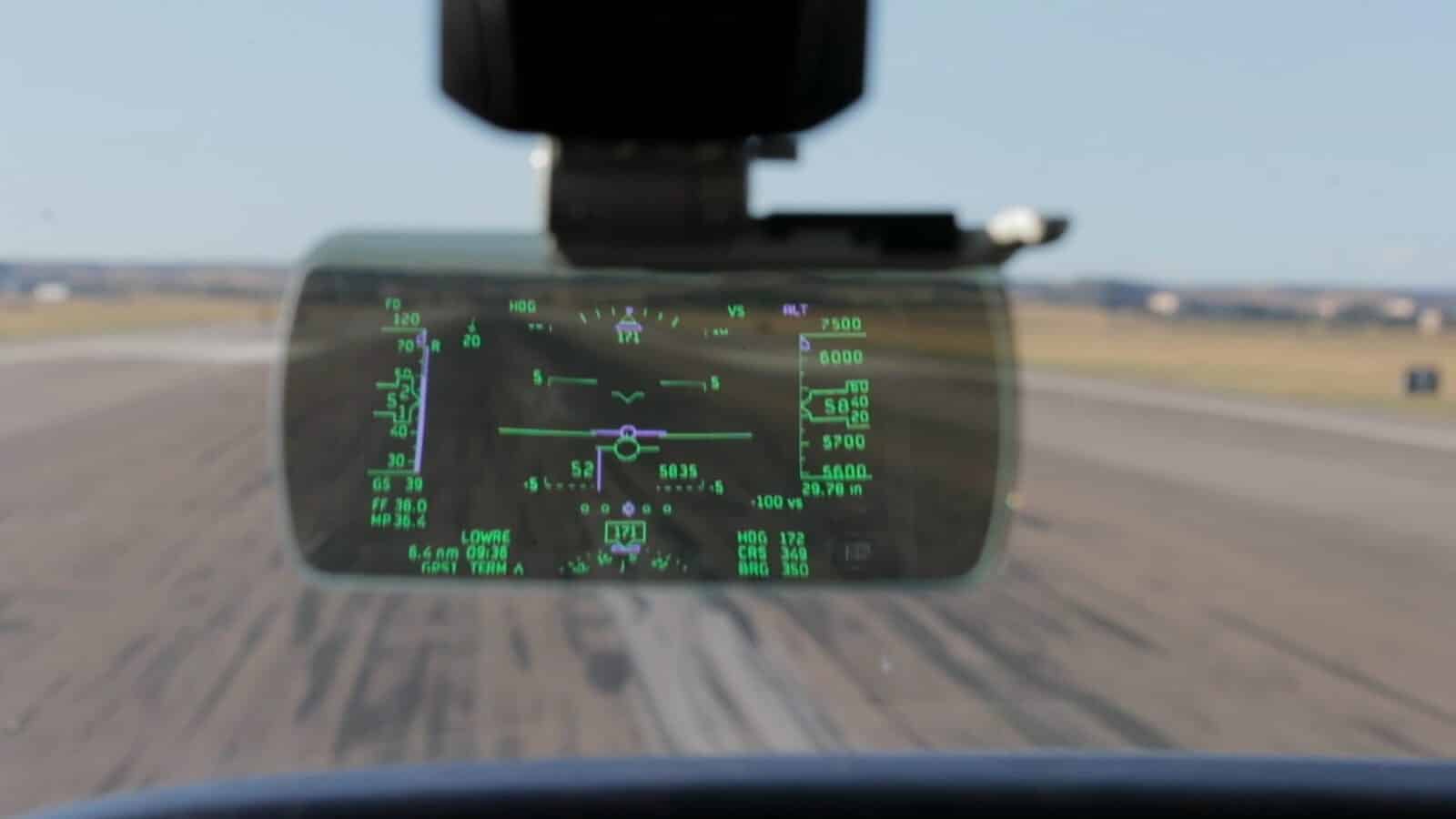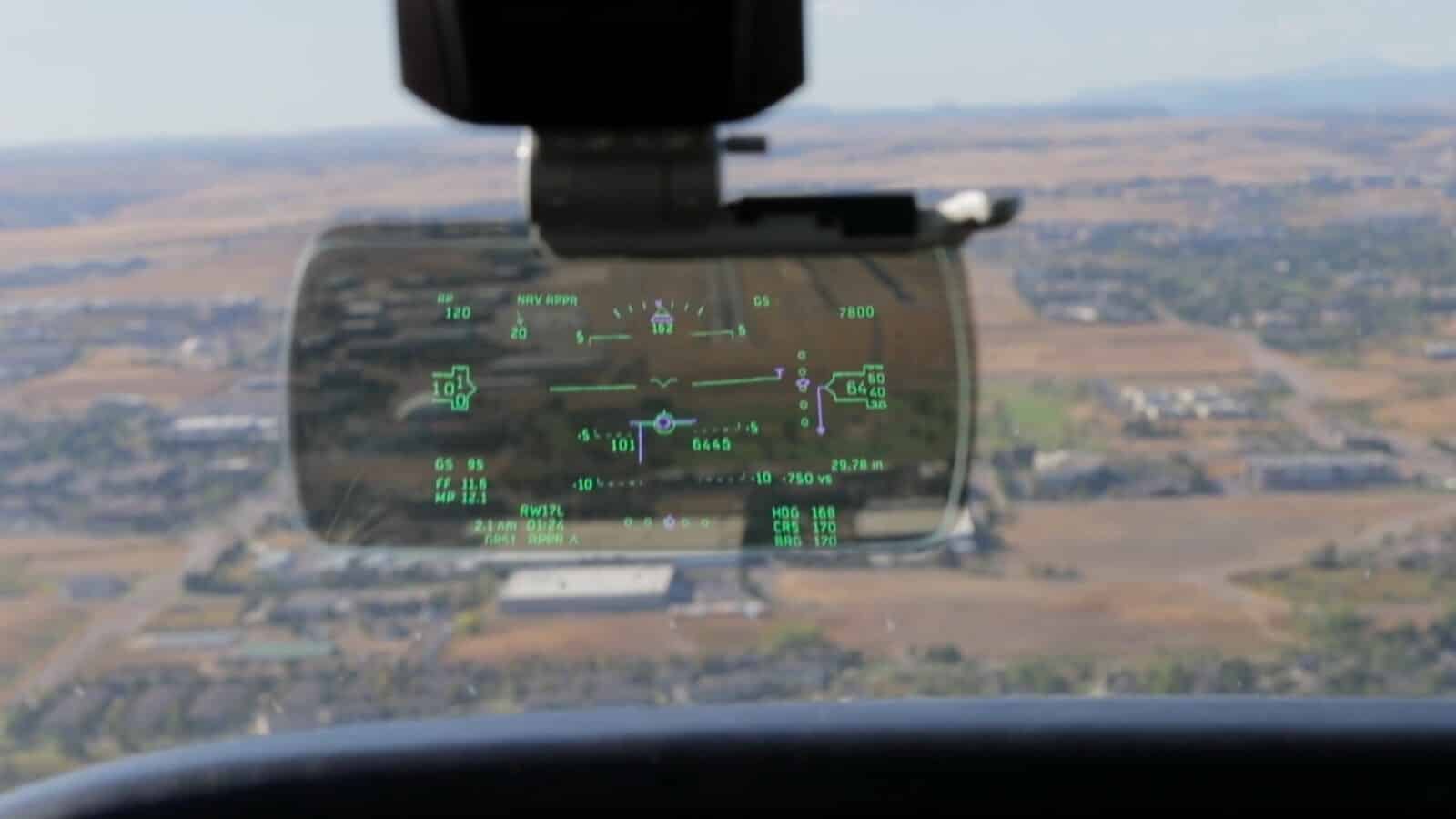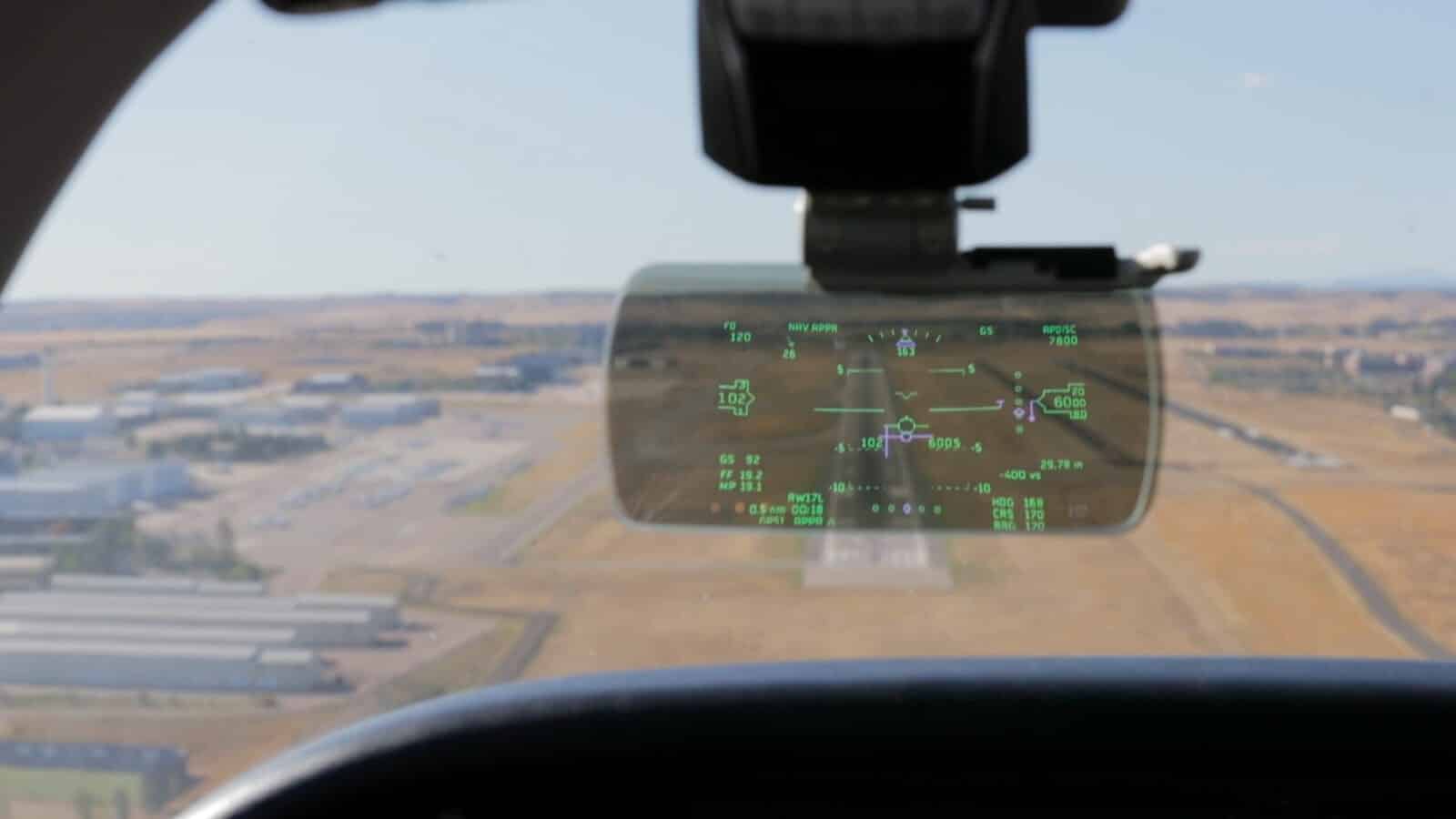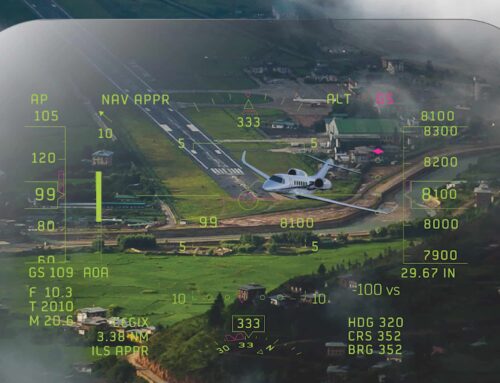
FIRST LOOK: MYGOFLIGHT’S SKYDISPLAY HUD. For the past two years the company has been developing a compact aftermarket (and OEM) HUD for piston, turbo-prop, and light jet aircraft.
SKYDISPLAY – Every bit as useful as HUDs on a Falcon or Gulfstream
“This brings Transport-category capabilities into Part 23 aircraft,” says company CEO Charles Schneider. So far, owners of 19 different airplanes have signed up for what MGF calls its SKYDISPLAY HUD. These airplanes range from piston singles to light jets.
The SKYDISPLAY takes flight and navigation inputs from an airplane’s ARINC 429 data bus and feeds it to a transparent viewing screen called a combiner. This way, the pilot can look through the combiner and see both the view ahead and the most essential attitude and flight guidance information at the same time. One big advantage of HUDs is that you needn’t move your head up and down when shifting your scan from the windshield to the instrument panel. This helps prevent vertigo during critical phases of flight and keeps your concentration outside the cockpit. This is especially critical when transitioning from instrument to visual flight references when landing out of instrument approaches in low ceilings and visibility.
The SKYDISPLAY has the same advanced features found on high-end HUDs costing $500,000 or more. The center of the combiner is dominated by a large representation of an attitude indicator, surrounded by airspeed and altitude tapes with trend indicators, a wind arrow, heading and course deviation indicators, as well as data blocks giving groundspeed, fuel flow, and power information. Depending on the phase of flight, some data may be decluttered. For example, on an ILS approach the round CDI depiction goes away, leaving just lateral and vertical scales for localizer and glideslope guidance.
Instead of the command bars familiar to most general aviation pilots, the display uses a circular, magenta flight director cue for heading and course guidance. A second symbol—the flight path marker—is a green symbol that indicates the airplane’s track. To follow a heading or course command from the airplane’s flight director, steer the airplane to center the flight path marker on the flight director cue. This guidance method is common in high-end business jets, and it’s intuitive and easy to use. Simply “put the jelly [the magenta flight director cue] in the doughnut [the flight path marker’s green circle],” to use one colloquialism.
For example, during an ILS approach with heading and nav sources selected, you’d see the flight director cue giving you heading commands as you intercept the final approach course. As the localizer or other nav source centers, the flight director cue switches you to follow the course—along with vertical guidance in the case of precision approaches.
For the full article, click here.






